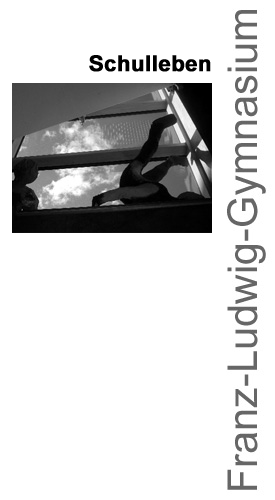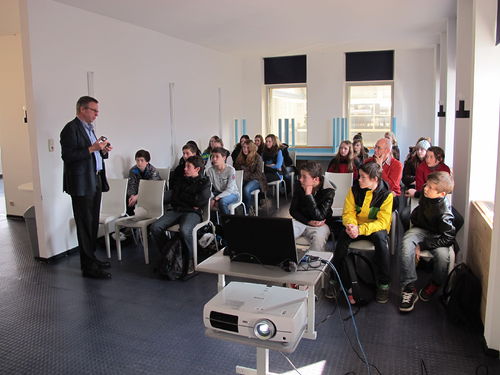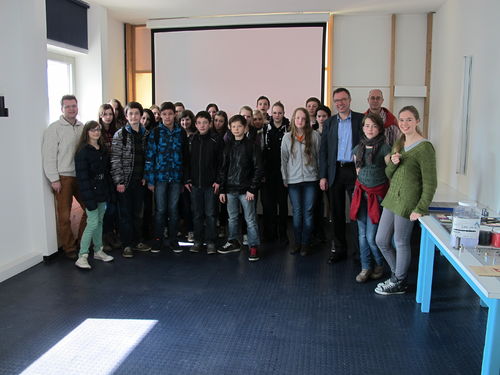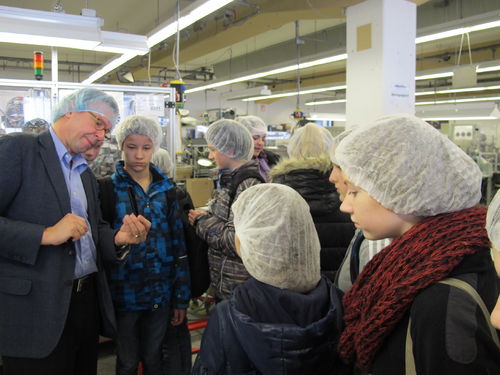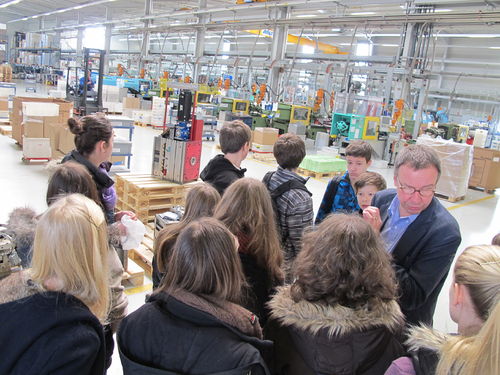„Schönheit – Beauty – Beauté“ Gemeinsames Projekt der Fächer Englisch, Biologie und Chemie
The World Of Beauty
During the second week of March, 2013, Form 8 B was surprised by their French teacher who proposed a project totally different from our usual work: reflections on beauty. And all that in English! What is beauty? What role does beauty play in our world? What do we find beautiful and, at the same time, important – or superficial? Why do beautiful persons or objects appeal to us? It did not take the students long to find lots of ideas which had something to do with beauty. First the students worked out a list of words, i.e. a net of ideas at the centre of which was the word BEAUTY. Here are some of their ideas: art: music/painting/sculpture/cinema, literature: novels/drama, woman: beauty competition, man: body building, fashion: clothes/hair/cosmetics, emotions, language, knowledge, happiness of existence, etc. The ideas above are just a few of the many thoughts and links that the students found within only a few minutes. But one aspect became clear from the very first moment: beauty is not only of personal and individual importance, it is something that concerns all of us. Who would not put on nice clothes for a romantic date with a charming person? Who would not prefer buying a cleverly designed car instead of a box on four wheels? Beauty, however, is not only linked to youth and physical attractiveness. It means far more to human beings. We discover beauty in the smiling face of a friendly old neighbour or our grandfather. We discover beauty in the soothing words of a person trying to comfort us. Or in his good actions. Beauty is far more complex than what TV tries to make us believe every day in numerous cheap programmes. Beauty in all its aspects can make our lives rich and worthwhile. It is up to us to discover it in the persons and objects that surround us. Beauty characterizes the mind of those who are willing to do good to other human beings.
After these considerations we moved on to what is important to all of us: the way we comb our hair. Our French teacher consulted the website of a French Hairdressers’ Association and found astonishing information on hair fashion. For example, in the 16th century, after King Francis I of France accidentally burnt his hair with a torch, men began to wear short hair. The English Queen Elizabeth I set the female trends for her era: society women copied her naturally pale complexion and red hair, using white powder along with red wigs. – And some of our class remembered that their own parents once had their hair very long: their idols were the Beatles or the Rolling Stones!
Why does beauty seem so important to young people? Do we fall in love more easily if others consider us beautiful? Certainly not. It is that heavenly feeling that we feel when Amor’s arrows have hit us; that’s when we say: “I’m in love.” And that is why our teacher brought along some texts containing conversations of people who are in love. They say, for example, ‘I have a crush on you.’ Or ‘I fancy her/him very much.’ And the French fall in love as well!
Fortunately, there are people who make us look better before we have a date – hairdressers or those who sell us cosmetic products. By the way, dear reader, did you know that Bamberg is home to one of the very important factories which produce plastic cylinders which are later filled in Paris with expensive lipstick, masquera, and many other products important to women … and men! Our teacher was able to get an invitation for us. So off we went to Oekametall on Friday where two gentlemen kindly and patiently explained the way those everyday products are made.
Thanks to Mr Oehlhorn and his colleague we spent a fascinating morning in a factory that works for L’Oréal and many other international firms. In the end we were even invited to have a lovely snack. Thank you very much for that wonderful experience, your time and hospitality!
Peter Hoh
Über die Schönheiten unseres blauen Planeten „Erde“ ging es im biologischen Teil des Projekts. Zuerst wurden in der Klasse die verschiedenen Vorstellungen von „Schönheit“ diskutiert. Der eine versteht darunter ein tolles Auto, wieder ein anderer eine schöne Blume, z.B. die Passionsblume oder ein Tier – etwa den Pfau beim Radschlagen. Auch die Menschen an sich wetteifern untereinander darum, der oder die „Schönste“ zu sein. Bilder von der Miss-Germany-Wahl 2012 gaben einen Einblick in solch einen Wettkampf. Dabei haben die Schüler zusammen mit Herrn Gärtig versucht, herauszufinden, was „Attraktivität“ und „Schönheit“ bei uns Menschen ausmacht. Die zentrale Frage dabei war: „Gibt es ein Schönheitsideal in der Biologie?“. Mit Hilfe von Bildmaterial quer durch alle Kulturen, von den Burmesinnen mit den Halsringen, über den Indianerhäuptling, tätowierte, bemalte und gepiercte Naturvölker, sowie den Penishüllen der Ureinwohner von Papua wurde versucht, diese Frage zu beantworten. Dabei wurde das „Frau“- und „Mann-Schma“ erarbeitet und das „Kindchenschema“ als Gemeinsamkeit entedeckt. Die Werbung macht sich diese allgemeinen Schönheitsideale zu Nutze, um in uns das Bedürfnis nach diesen Produkten zu wecken.
Im dritten Teil des Projekts lernte die Klasse bei Herrn Gärtig, wie der Mensch mit Hilfe der „Chemie“ versucht, dem Schönheitsideal näherzukommen. Hierbei ging es um die chemischen Grundprinzipien, welche angewandt werden, um Salben, Hautcremes und Kosmetika herzustellen. Ein Film diente der Veranschaulichung. Dieser Teil bildete u.a. die Grundlage zum Höhepunkt des Projektes, der Betriebsbesichtigung der OEKA-Metall in Bamberg, welche u.a. die Hüllen für Lippenstifte herstellt.
Stefan Gärtig
